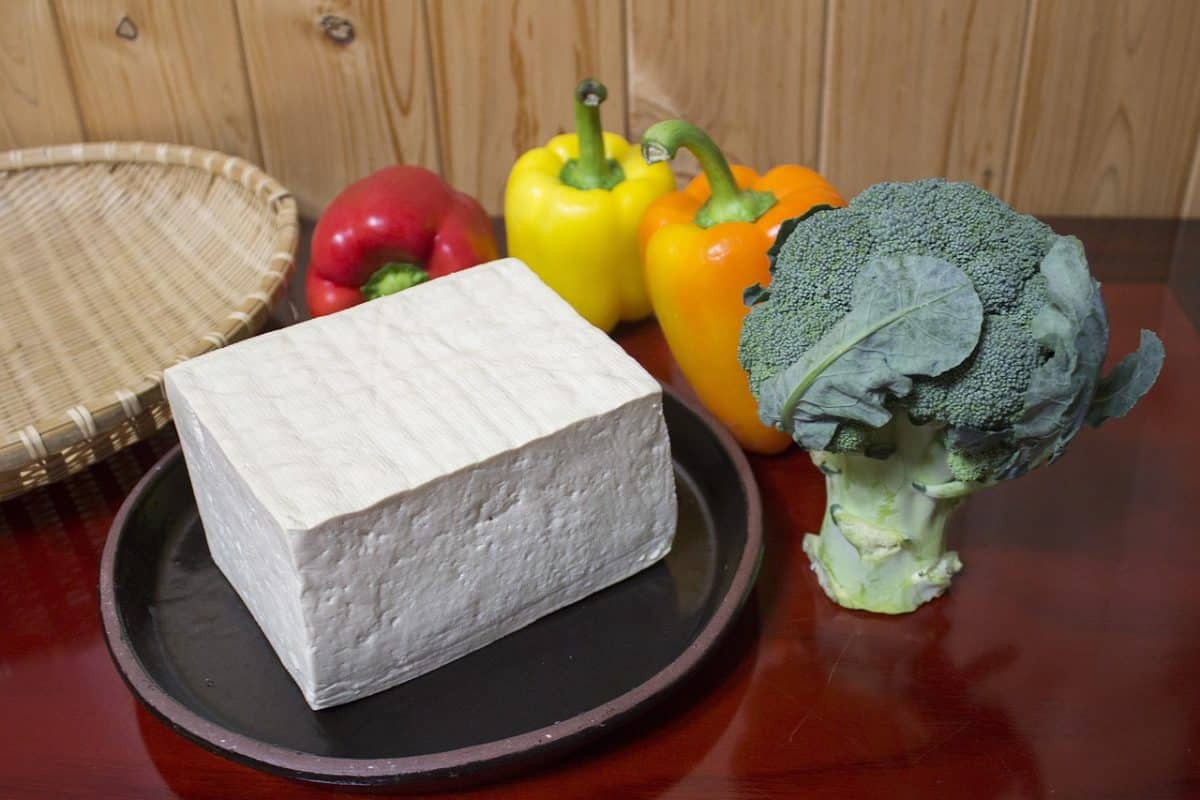Tofu, also known as bean curd, is a food product made from soybeans. It is a staple in many Asian cuisines, and is known for its high protein content and versatility in a wide range of dishes.
How is tofu made?
The process of making tofu is similar to the way cheese is made from milk. Soybeans are first soaked in water, then ground and strained, yielding a milky liquid known as soy milk.
The soy milk is then heated and a coagulant (like nigari or calcium sulfate) is added. This coagulant causes the soy proteins to bind together and form curds. The curds are then scooped into a molding box and pressed to squeeze out the whey (liquid). The more the curds are pressed, the firmer the tofu becomes.
What are the different types of tofu?
Silken Tofu is the least processed form of tofu and has the highest water content. It has a smooth, custard-like texture and is often used in soups, desserts, and smoothies.
Soft or Regular Tofu has a slightly firmer texture than silken tofu, but is still quite delicate. It’s often used in soups or gently simmered dishes.
Firm Tofu holds its shape well and is good for grilling, stir-frying, or pan-frying. It absorbs marinades well and can have a slightly chewy texture.
Extra-Firm Tofu is the firmest type of tofu and has the lowest water content. It holds up very well in most cooking methods, including grilling, baking, stir-frying, and deep frying.
There are also specialty tofu products like tofu skin (made from the skin that forms on the surface of soy milk as it’s heated), smoked tofu, and fermented tofu. Each type has its own unique flavor and texture characteristics, and the best type to use really depends on the specific dish you’re making.
Is tofu nutritious?
Tofu can be a nutritious part of a balanced diet. It is a good source of protein, particularly for vegetarians or vegans. It’s also a source of important nutrients like calcium, manganese, selenium, iron, and magnesium.
Tofu is low in calories but high in protein and very low in saturated fat. The soy isoflavones present in tofu have been linked to a range of health benefits, including a reduced risk of heart disease and possibly relief of menopausal symptoms. Tofu is also often enriched with additional vitamins and minerals, like Vitamin B12 and Vitamin D, which can be particularly beneficial for people on plant-based diets.
However, people with specific health concerns, such as those with thyroid issues or breast cancer, may need to limit their soy intake, as soy contains compounds called isoflavones, which can have weak estrogen-like effects in the body. You may also choose to look for tofu made from organic or non-GMO soybeans. Tofu is naturally gluten-free, but may be processed in facilities that also process wheat, so those with celiac disease or a severe gluten intolerance should look for tofu specifically labeled as gluten-free.
How can tofu be prepared?
Tofu can be grilled, baked, stir-fried, deep-fried or prepared in a number of ways without cooking.
Try our recipe for Tofu Tikka Masala.
It’s perfectly safe to eat raw, as tofu is actually cooked during its production process.
Blend silken tofu into a smoothie for added protein and a creamy texture. It’s a great substitute for yogurt or protein powder. It can be blended and used in desserts, like mousse, pudding, or vegan cheesecake. Mix with herbs and spices to make a creamy dip, or combine with nutritional yeast and spices to make a vegan cheese spread. Tofu can be cubed and added to salads and cold noodle dishes, sliced and added to fresh Vietnamese-style summer rolls, and used as a sushi filling.
Store raw tofu in the refrigerator and use it within a few days of opening.

